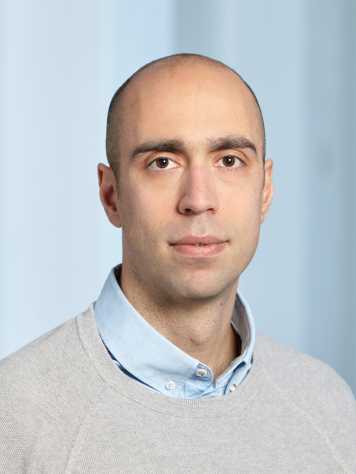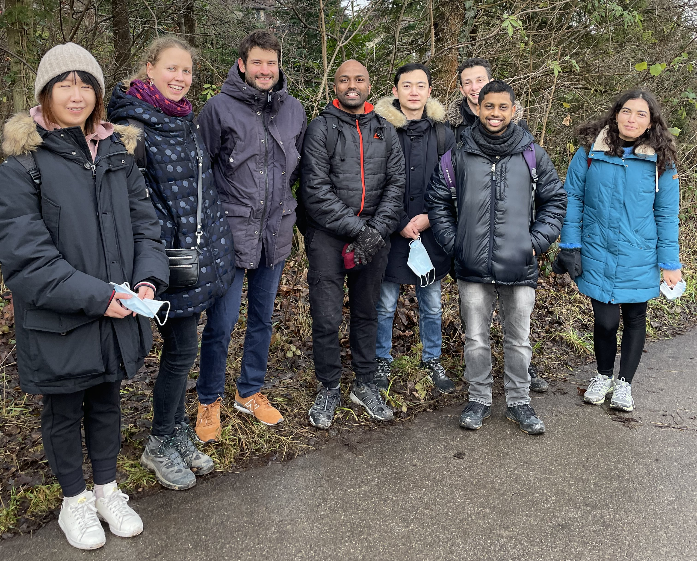"I would like to improve the quality of patient care"
In our interview, Ender Konukoglu, professor at the Computer Vision Lab (CVL), talks about his research at the intersection of medicine and engineering and about the challenges that arise when linking these two forward-looking fields.
Prof. Konukoglu, what is your main area of research?

My main area of research is biomedical image analysis. We write algorithms in order to interpret biomedical images, aiming to make them as useful as possible for healthcare applications. There are actually two aspects to it:
One aspect is the application and the fact that healthcare has become more and more data-driven in general. The advantage is that this way medicine depends less on the experience of only one person, a doctor for example, which generally leads to a more accurate and precise treatment. The disadvantage comes at a huge cost, though, as the datasets are very large. Hence, we use machine learning techniques to make them more accessible and easier to manage.
The second aspect comes from the scientific problem to understand how human perception works. Medical imaging is a fantastic application for it, as our goal is to understand why things that are so easy for us are so difficult for a computer.
What brought you to this field? Why does it fascinate you?
I studied electrical engineering at Bogazici University in Istanbul and I think it’s a very cool field (laughs). Apart from that, I wanted to do something with healthcare because it is such a vast area, which touches the life of every human being sooner or later. My personal view is that the way it is done now can be improved and electrical engineering has a lot to contribute to this. So, I am really at the intersection of these two fields. I was also lucky to have really good instructors at university, who ignited my interest in the field.
“We have been using machine learning extensively since 2009 because it is currently the best way to “encode” knowledge in an algorithmic way.”Prof. Ender Konukoglu
What is the impact of your research on society? And what are currently the biggest challenges in your field of research?
The main impact is the improvement of patient care, that means improved diagnosis, treatment, prevention etc. Towards these goals there are multiple things you can do; I chose to focus on medical images and try to interpret them with the help of machines. Machines have of course their advantages: their preciseness, their high throughput, and their inability to become tired. All these factors lead to an increase in efficiency and a decrease of healthcare costs. In a greater context we would like to make computers understand complex problems better, teach them reasoning etc. – there is still a lot to achieve!
One of the biggest challenges is to convince patients that what we do is for their benefit. All technologies have good and bad sides, but we would like to bring up arguments against skepticism and presumably also false rumors. Under the right regulation and legislation, our technology can do so much good. We currently have collaborations with the USZ, Balgrist University Hospital and a few other institutions, but it is still a big step to persuade the healthcare system as a whole to make their data accessible and for example also insurance, companies, governments and of course also patients. In Switzerland, people are very open to new technologies, but at the same time also protective of their privacy.
You use methods of machine learning to improve biomedical imaging. Can you give us more details?
It is difficult to say more about it without going into too much detail (laughs). We have been using machine learning extensively since 2009 because it is currently the best way to "encode" knowledge in an algorithmic way. In simple terms, we would like to reproduce what a radiologist does, for example detecting nodules. Secondly, we concentrate on what a radiologist cannot do, for example improve the quality of the images and combine large datasets together to reach an answer.

Are you collaborating with other people at D-ITET or other departments at ETH Zurich?
We have a lot of collaborations with Prof. Van Gool and Prof. Göksel from our Computer Vision Lab. Outside the lab, I work with Prof. Kozerke, Prof. Stampanoni, Prof. Prüssmann and Prof. Stephan from the Biomedical Engineering Lab. D-ITET is a very strong place for biomedical imaging in general. Beyond this research area, I collaborate with Prof. Wood on the imaging of batteries. On ETH level we are collaborating with D-INFK, e.g. Prof. Pollefeys, Prof. Buhmann, as well as with Prof. Wolfrum from D-HEST. ETH is really strong in healthcare, so this offers a lot of opportunities. I’m also involved in the SURGENT flagship project in cooperation with Balgrist University Hospital. Our role in the project is to interpret and analyse images and try to create models and simulations that help the surgeon throughout the operation. This is especially useful for very sensitive operation areas, such as the lower lumbar spine.
How do you like ETH as a research institution?
ETH is great! I don’t know many other places that give you as much flexibility, but also the financial means at the same time. And I’ve been in several places, both industry and in research, from Microsoft Research to Harvard Medical School. Every place has its advantage, but I would prefer ETH any day! On top of that, the students are just very good and motivated.
How is your group composed? Are you currently looking for doctoral students?
I currently have seven doctoral students, five of them are supervised by me only and two of them co-supervised with Luc Van Gool and Marc Pollefeys, respectively. In general, I also have two or three postdocs – so my group is around ten people. The group is very international and aiming to attain a 50/50 women and men ratio, with the majority having an electrical engineering or physics background. I am currently not looking for students, but for outstanding applications opportunities could be found.
What courses are you teaching this semester? Will the Corona crisis have a lasting effect on teaching and research?
Generally, I teach computer vision together with Luc Van Gool and Fisher Yu, a large course with around 300 students every fall semester. This semester I am teaching medical image analysis, a smaller course with 60 to 70 students plus a smaller course on Biomedical Image Computing. I’m also involved in the Certificate of Advance Studies (CAS) in Applied Information Technology with a module on “Humans and Machines", which is an interesting experience as the background of the students is very diverse.
Regarding Corona: For teaching I think it will have a lasting impact, since so much went online. I personally think I will keep streaming, even after the pandemic. It’s basically extra material for the students. Also what happens next to class, the Slack channels, the Moodle platforms etc. will in my point of view all continue. A negative aspect is that remote teaching is just not so much fun for the students, and also not for me. As far as the research is concerned, for example brainstorming cannot be reproduced so easily online, and that is actually hard to lose. I hope here we get back to before at some point. The need to travel has decreased as well, where again, it is a differentiated picture: Travelling to conferences is fun and a great way for students to meet new people; travelling to meetings will hopefully remain in its now very reduced form – I don’t miss it for time-saving aspects, but also from an environmental point of view.
SURGENT (Surgeon Enhancing Technologies) aims to establish new standards of patient specific planning and execution of precision spinal and neurosurgery.
This highly interdisciplinary project stands at the cross-roads of surgery, biomedical imaging, computer sciences and Engineering. It will converge all these fields for development, integration, optimization, and clinical validation of state-of-the-art technologies for surgical skill augmentation and embed these tools within efficient and economical clinical workflows for the benefit of the patient.
external pageSURGENT project website
